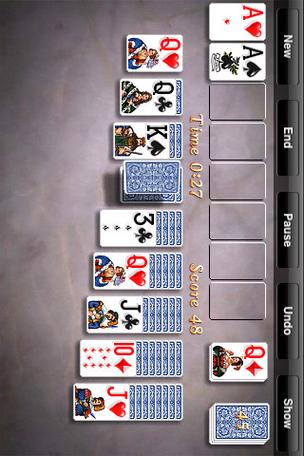Understanding Paid Solitaire: A Comprehensive Guide
Have you ever wondered what Paid Solitaire is all about? If you’re a fan of card games and looking for a new challenge, Paid Solitaire might just be the perfect fit for you. In this article, we’ll delve into the world of Paid Solitaire, exploring its origins, gameplay, benefits, and much more. So, let’s embark on this exciting journey together!
Origins and Evolution
Paid Solitaire, as the name suggests, is a paid version of the classic Solitaire card game. Solitaire, also known as Patience, has been around for centuries, with its origins traced back to the 18th century. Over the years, the game has evolved, with various versions and variations being introduced. Paid Solitaire is one such variation that offers players a unique and engaging experience.

Gameplay and Rules
Paid Solitaire follows the same basic rules as the classic Solitaire game. The objective is to move all the cards from the tableau to the foundation piles, following the sequence from Ace to King. The game consists of several tableau piles, foundation piles, and a stock pile. Players need to strategically move cards between the piles to achieve the desired sequence.
| Tableau Piles | Foundation Piles | Stock Pile |
|---|---|---|
| 7 piles, with the first pile containing 1 card, the second pile containing 2 cards, and so on. | 4 piles, each representing a suit (Hearts, Clubs, Diamonds, and Spades). | Contains all the remaining cards, initially dealt face down. |
Players can move cards between the tableau piles and the foundation piles, following the rules of alternating colors and in descending order. The game ends when all the cards are moved to the foundation piles.
Benefits of Paid Solitaire
Playing Paid Solitaire offers several benefits, making it a popular choice among card game enthusiasts. Here are some of the key advantages:
-
Strategic Thinking: Paid Solitaire requires players to think strategically and plan their moves in advance. This helps improve cognitive skills and problem-solving abilities.

-
Stress Relief: Engaging in a game of Paid Solitaire can be a great way to unwind and relieve stress. The game’s relaxing nature and simple rules make it an ideal choice for a calming pastime.
-
Entertainment: Paid Solitaire provides endless hours of entertainment, with various levels and challenges to keep players engaged.
-
Community: Many Paid Solitaire games offer a community feature, allowing players to connect with others, compete, and share their experiences.
Types of Paid Solitaire Games
There are several types of Paid Solitaire games available, each with its own unique gameplay and rules. Here are some popular variations:
-
Klondike: The most popular version of Solitaire, where players need to move cards from the tableau to the foundation piles, following the sequence from Ace to King.
-
Spider: A challenging version of Solitaire, where players need to clear eight tableau piles using four suits. The game starts with one card face up and the rest face down.
-
FreeCell: A simple and easy-to-play version of Solitaire, where players have access to all the cards in the deck at any time. The objective is to move all the cards to the foundation piles.
-
TriPeaks: A modern variation of Solitaire, where players need to clear a pyramid of cards by moving them to the foundation piles. The game features multiple levels and challenges.
Conclusion
Paid Solitaire is a captivating and entertaining card game that offers numerous benefits to players. With its strategic gameplay, endless variations, and relaxing nature, it’s no wonder why Paid Solitaire has gained such popularity. So, if you’re looking for a new challenge or simply want to unwind with a game of cards, Paid Solitaire is definitely worth a try!

